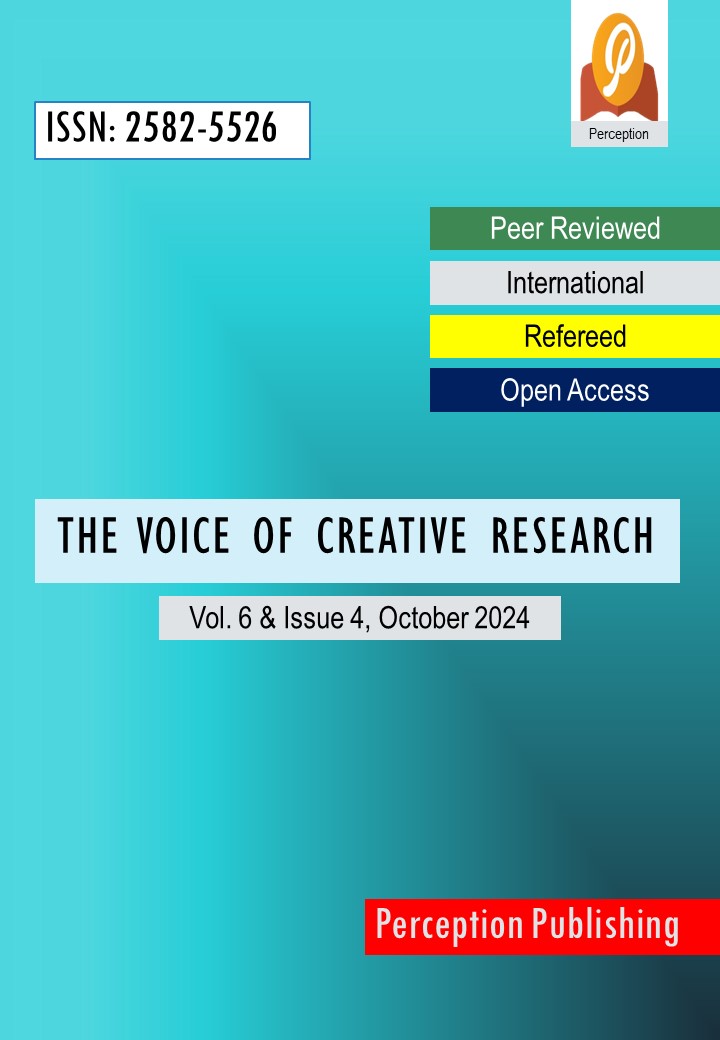Using Electronic Mind Maps in developing students’ Reading Comprehension
DOI:
https://doi.org/10.53032/tvcr/2024.v6n4.09Keywords:
electronic maps, mind mapping tools, reading comprehension, critical thinking, better understandingAbstract
Reading comprehension is an important skill that significantly impacts academic achievement and emotional well-being. It demands students to connect studying with personal experience, or what they are already aware of in order to make a meaning when reading. In order to improve reading comprehension, novel techniques such as electronic mind map have been investigated. Mind maps especially digital ones, are a pictorial representation of the way the brain organizes, stores, and retrieves information. Mind maps help learners interconnect concepts and digest data to enhance memory and understanding. The current study focuses on the use of electronic mind maps for reading comprehension. Through the use of images, blue, and hierarchical structure, mind maps ensure that both right and left sides of our brains are activated and enhanced, thus stimulating creative and logical thinking. Studies show that students are more engaged in their learning process when they use visual thinking methods, such as mind maps, to map out the relationships between ideas. This study also highlights Buzan’s seven steps to creating an effective mind map such as employing a central image, adding colors, curved branches to maximize engagement and increase memory. The resulting evidence suggests that electronic mind maps are an effective method to enhance reading comprehension, afford a flexible, responsive and motivating way of learning. This approach is adaptable to a variety of learning styles, promotes deeper cognitive involvement, and is a useful instructional tool.
References
Buzan, T. (2006). The Mind Map Book: Unlock your creativity, boost your memory, change your life. BBC Active.
Buzan, T., & Buzan, B. (1994). The Mind Map Book: Unlock your creativity, boost your memory, change your life. BBC Active.
---. (1996). The Mind Map Book: Unlock your creativity, boost your memory, change your life. BBC Active.
Coggle. (2020). Coggle: A mind map tool for teams and individuals. Retrieved from https://coggle.it/
Dara, M. (2010). The effectiveness of electronic mind maps in learning. Journal of Educational Technology and Society, 13(2), 55-65.
Goodman, K. S. (1970). Reading: A Psycholinguistic Guessing Game. In H. J. Davis & D. C. Hawkins (Eds.), Language and Learning: The Debate between Jean Piaget and Noam Chomsky. John Wiley & Sons.
Hariri, A. (2013). The impact of mind mapping on EFL learners' reading comprehension. English Language Teaching, 6(9), 87-94.
Holzman, R. (2004). The effectiveness of mind maps for improving low-achieving students' learning. Journal of Educational Psychology, 96(3), 694-701.
MindMeister. (2020). MindMeister: Online mind mapping software. Retrieved from https://www.mindmeister.com/
Moore, M., & Lo, S. (2008). Mind Mapping as a Tool for Learning: The Case of Visual Memory. Educational Psychology Review, 20(1), 85-95.
Novak, J. D. (1984). Learning Theory: The Theory of Meaningful Learning. Educational Psychologist, 19(2), 60-68.
Sabbah, A. (2015). The role of computerized mind maps in enhancing students' reading comprehension. Journal of Educational Computing Research, 52(3), 309-326.
Tucker, A., Armstrong, D., & Massad, M. (2010). Using Mind Maps to Improve Learning and Memory in Secondary School Students. Educational Studies, 36(4), 273-286.
Zeki, S. (1993). A Vision of the Brain. Blackwell Scientific Publications.
Downloads
Published
How to Cite
Issue
Section
License
Copyright (c) 2024 The Voice of Creative Research

This work is licensed under a Creative Commons Attribution-NonCommercial 4.0 International License.




